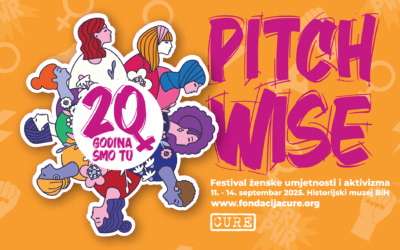The Lolita Effect (Lessons for Girls series)
What do you think of thongs for 10-year-olds with slogans like “eye candy”? Underwear for teens with “Who needs credit cards…?” written across the crotch? Tini-Bikinis for toddlers? High heels for 5-year-olds?
~**~
Last week I wrote about what Disney princesses teach little girls, and it’s pretty scary. Except that this is only one of a multitude of ways in which little girls are socialized to be partners in their own objectification. Examples include (but are certainly not limited to):
- Teaching girls that it is more important to be pretty than to be smart (or successful/independent/fill-in-your-positive-value-here).
- Sexualizing girls from a young age
- Silencing. Girls are taught to avoid confrontation (so they have trouble saying and meaning NO). They are taught to please. They are taught that their role is to nurture others (often at their own expense). They are taught to apologize for having opinions. They are taught to be comfortable in support positions/the back row.
Each of these can be broken down into sub-categories, and I could probably happily spend my life writing a dissertation on each of them if I had the time and resources. Alas, all I have is this blog, but hey, that’s what I started it for. I have a feeling that I can’t begin to do justice to any of the topics in a mere paragraph, so I’ll do a separate post for each.
Part 1: The Lolita Effect, and sexualization of girls in the mainstream media.
In her book, The Lolita Effect, M. Gigi Durham, Ph.D., discusses what pop culture, and especially advertising, teaches young girls and boys about sex and sexuality. She defines five myths that are ingrained in this culture, which make up the Lolita Effect:
- Girls don’t choose boys, boys choose girls–but only sexy girls
- There’s only one kind of sexy–slender, curvy, white beauty
- Girls should work to be that type of sexy
- The younger a girl is, the sexier she is
- Sexual violence can be hot
She talks about how the mass media undermines girls’ self-confidence, condones female objectification, and tacitly fosters sex crimes. (Here is an in-depth interview.)
I’m sure we’ve all seen examples of this – but how closely are we watching? Little girls are increasingly portrayed in mainstream media and advertising in a sexualized way, and treated as consumers of a sexualized self-image.
Remember in the late 70s early 80s all the controversy around Brooke Shields? At the age of TEN she was photographed by Gary Gross (via Playboy Press) in a series meant to “reveal the femininity of prepubescent girls by comparing them to adult women”.
Later, at the age of twelve, she triggered another media frenzy when she portrayed a child prostitute in the movie Pretty Baby. The movie included four Shields nude scenes (note: the original version of the movie with these scenes is no longer available; today’s version on DVD has edited out the nudity).
And later yet, at the age of fifteen, Shields let us know on national television, in no uncertain terms that “nothing comes between me and my Calvins”. Hard to interpret that in a non-sexualized way.
The thing is that back then, this still stirred controversy. Brooke Shields was not in any way mainstream. Let’s take a look at some of what’s being presented to little girls *these* days:
In 2006, UK supermarket chain Tesco marketed this in their online TOYS AND GAMES section with the words:
“Unleash the sex kitten inside…simply extend the Peekaboo pole inside the tube, slip on the sexy tunes and away you go!”
“Soon you’ll be flaunting it to the world and earning a fortune in Peekaboo Dance Dollars”.
The store subsequently removed it from the toy section and repackaged it as a “fitness accessory”, but continued to deny that it was sexually oriented. However, Tesco continued to face public outrage due to padded bras and other sexy items it marketed to young girls.
Other UK chains that targeted sexy clothes and underwear to pre-teens include M&S, ASDA, and Argos, while US retailers Walmart, and Abercrombie & Fitch also marketed push-up bras, padded bras, and thongs to girls as young as six years old. French Jours Apres Lunes markets lingerie for pre-teens. And have I mentioned Tini-Bikinis for toddlers?
Major UK retailers have since signed on to a government guideline banning such items for children under twelve (12-year-olds can still be sexualized freely). A&F, on the other hand, were pretty happy with the publicity they received (they eventually removed the word “push-up” but left “padded”).
Whether or not public pressure is applied on a case-by-case basis, there is still a very clear truth being outlined here: That there is a MARKET for this. This article suggests that 30% of clothing sold to girls is sexualized. And much has been written on how girls’ Halloween costumes are increasingly sexualized.
The fashion world hasn’t missed out on the party. This ten-year-old model featured in French Vogue in lipstick, high heels, and provocative poses has become the darling of fashion if not of parents:
Finally, lest anyone think that all this is objectionable from “merely” an ideological perspective, or that parents are being “moralistic” when they oppose this, the American Psychological Association concluded in their 2010 task force report that sexualization negatively affects girls and young women across a variety of health domains:
- Cognitive and Emotional Consequences: Sexualization and objectification undermine a person’s confidence in and comfort with her own body, leading to emotional and self-image problems, such as shame and anxiety.
- Mental and Physical Health: Sexualization is linked with three of the most common mental health problems diagnosed in girls and women – eating disorders, low self-esteem, and depression.
- Sexual Development: Sexualization of girls has negative consequences on girls’ ability to develop a healthy sexual self-image.
Read the full report here. http://www.apa.org/pi/women/programs/girls/report-full.pdf
All tekst is teken from the web site https://feminainvicta.wordpress.com/2011/11/13/the-lolita-effect-lessons-for-girls-series/







